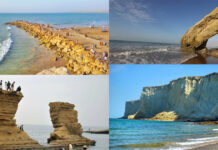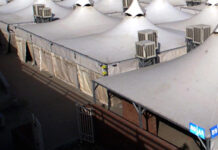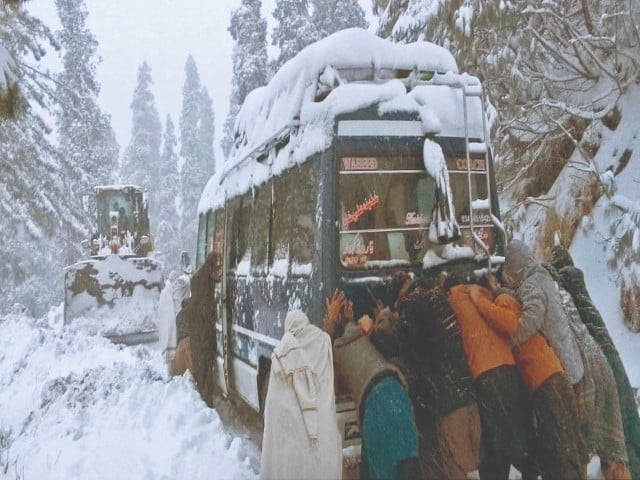After months of dry weather, the upper regions of the country finally received rain and snow, causing temperatures to drop.
Heavy rain fell across upper and central areas. Islamabad’s Golra recorded the highest rainfall at 70mm, followed by Narowal (48mm), Gujranwala (47mm), Murree (23mm) and Lahore (22mm). In Khyber Pakhtunkhwa, Dir Bala got 56mm, while Peshawar received 35mm. Kotli and Rawalakot in Azad Jammu and Kashmir recorded 28mm, and Quetta saw 5mm.
Murree, a popular tourist spot, saw unexpected snowfall. Authorities struggled to manage the situation while visitors enjoyed the winter scenery on Mall Road.
Rain in Rawalpindi, after four dry months, cleared blocked drains and raised water levels in Rawal, Khanpur and Simly Dams. Wasa Director Umar Farooq called it a “blessing” for water reserves and crops.
Read more: 5 Poetry Books to Cuddle With on Winter Nights
Kaghan Valley and Abbottabad’s hills saw heavy snowfall. Shogran got six inches, Kaghan two inches and Naran one foot. The Kaghan Development Authority cleared roads to restore access.
Thandiani, Nathiagali and Ayubia had their heaviest snowfall of the season. Galiyat received nine inches, while Thandiani got one foot.
Shangla district was blanketed in snow. Higher mountain areas received over two feet, while residential regions saw light snowfall. In Swabi’s Colonel Sher Khan Kallay, a house roof collapsed due to heavy rain, injuring a mother and her two sons.
Leh recorded the lowest temperature at -8°C, followed by Parachinar (-4°C), Bagrot, and Gupis (-3°C). The Pakistan Meteorological Department expects continued cold weather. Light snowfall may occur in Balochistan’s mountains, and Sindh’s coastal areas may see drizzle. Kashmir and Gilgit-Baltistan will stay extremely cold.
Stay tuned to Brandsynario for the latest news and updates.











































